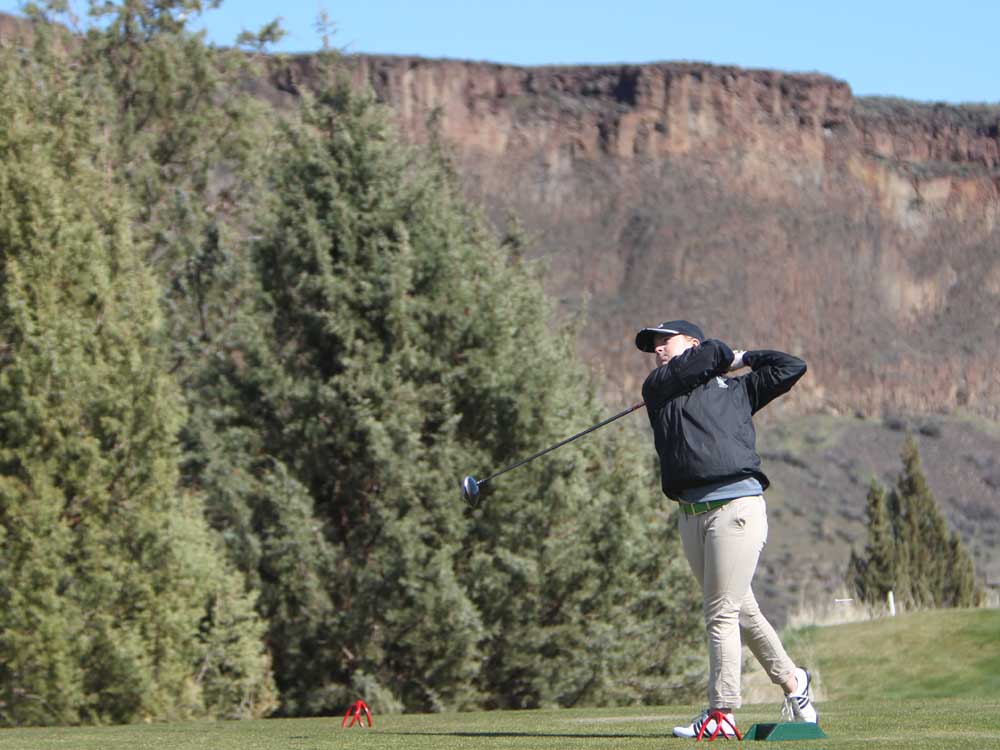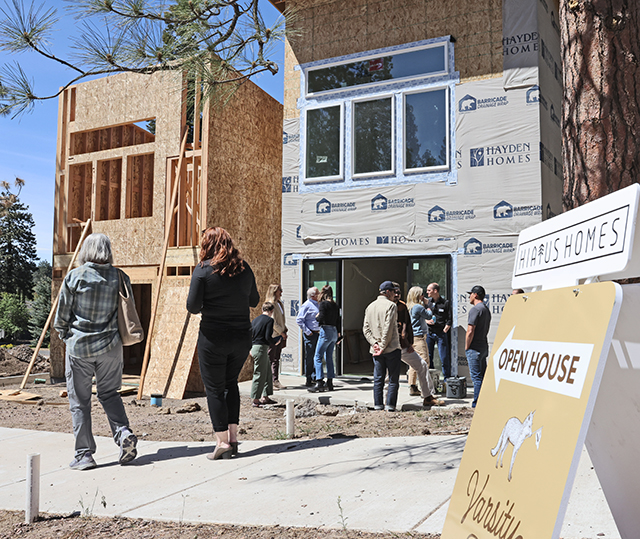Golf courses work on pace of play
Published 12:00 am Monday, June 22, 2015

- Photo by Andy Tullis / The BulletinSummit golfer, Madison Odiorne tees off on the 13th hole while competing at the 2015 Crooked River Invitational at Crooked River Ranch Golf Course.
You’re on the golf course and one of your playing partners has just sprayed one to the right into the pines.
Five minutes later, the search by the group has not turned up the golf ball. If the group is casual, he drops another ball. But if the game is more serious, he returns to the tee to play another shot.
Just like that, you’ve fallen out of place on the course — and your group is rushing to catch up to the group in front of you before the dreaded visit from the course marshal.
That’s all it takes, one bad shot, and you are behind the recommended pace of play.
The time required to play a round of golf is one of the biggest issues for golfers, and courses, in the industry today. One slow group early in the day can turn your round of golf into a marathon, and with the influx of vacationing players in Central Oregon during the summer, courses in the area have to take the issue seriously.
The clock is ticking on your round — and clubs are doing everything in their power to make sure you hit their target pace.
River’s Edge
Look down at your scorecard at many area courses, and you will find that target pace listed for every hole.
Among those, River’s Edge in Bend, which has each hole broken down into 14-minute intervals, putting players on a pace for a round taking 4 hours and 12 minutes.
That is consistent with most courses in Central Oregon.
“It at least gives players a guide all the way through the round,” said River’s Edge director of golf Troy Eckberg. “We should be able to keep on the pace of 14 minutes a hole.”
The pro said that a number of things influence the time it takes to play 18 holes at his course.
“There are so many different factors that we go through to help with pace of play,” Eckberg said. “It goes from the front counter to marshals to the maintenance of the course. Managing the tee sheet at the counter is really the start of it.”
Pro shop staff pair up singles and twosomes, trying to make sure that golfers are grouped into threesomes and foursomes to allow for smooth flow of play.
Marshals at River’s Edge work the course seven days a week, monitoring groups’ times on a hole-by-hole basis. The pro shop keeps track of every group as they make the turn.
The setup of the golf course is also an important factor in the pace of play.
“We make the course a little more player-friendly,” Eckberg said. “We widen the fairways, keep the greens at a good speed for all levels of players, and keep the rough on the edges mowed down so people are not looking for golf balls for three or four minutes.”
With the constant monitoring, Eckberg has seen an improvement in pace of play at River’s Edge.
“Our pace used to be a little slower,” he said, “but it has been good so far this year.”
Widgi Creek
Josh Bowles, the head professional at Widgi Creek, cut back the recommended playing time at his course just this season, from 4 hours and 30 minutes to 4:15.
Rather than an established time per hole, Widgi’s scorecard lists varying times to play par 3s, 4s and 5s — from 10 minutes on a par 3 to 20 minutes on a par 5.
“From experience, timing people as they come off of (No.) 9 and 18, this is a very good indicator of how long it should take to play our golf course,” Bowles said. “If you just go through it hole by hole, it makes sense.
“It’s pretty easy to hit the time if we just have active marshals.”
In an email to his marshals two weeks ago, Bowles outlined his expectations for their duties.
“First, I emphasized customer service, because that is our industry,” he said. “But customer service also means taking into consideration everyone else on the golf course — and that means pace of play.”
Recognizing that most groups are not thrilled when told they are lagging behind, Bowles wants his marshals to have a good attitude when dealing with a slow group.
“They should be told they need to pick it up, but in a friendly manner,” Bowles said.
While regular members at the club tend to get around the course while meeting the time specifications, the weekends bring more play from visiting golfers, and rounds can be a little slower.
“The rounds in the mornings are normally great, but as the day goes on they just gradually get a little longer,” Bowles said. “I think it’s just because of the amount of play, people are on vacation and a lot of them are not regular golfers, so they just don’t know.
“Just educating them on pace of play is all you need — then they get it and start moving along.”
Crooked River Ranch
On busy days at the course north of Terrebonne, the design on the front nine leads to some issues with pace of play.
“We struggle with it because we have some holes that kind of bottle up,” said Pat Huffer, PGA professional at Crooked River Ranch.
Longer hitters can reach on the short par-4 third hole, the fourth is a par 3, and the course’s signature hole, the par-4 fifth also tempts those with length to go for the green over the Crooked River Gorge to the left of the hole.
The staff is proactive about informing players about the potential of a slow front nine.
“Our marshals try to make sure that we let people know that it (a backup) is going to happen,” Huffer said. “We let them know that it’s going to be a little slow through No. 5. It all tends to stack up and kind of comes to a head there with people waiting on the tee.”
The backup on those holes has tempted Huffer to change the nines at Crooked River.
“I’ve actually toyed with the idea of flipping the nines, but the pro shop is so far away from the 10th tee that we would have to staff it with a starter,” he said. “The other problem with that is that (Nos.) 7, 8 and 9 are not that strong of finishing holes.”
While the scorecards at CRR do have pace-of-play recommendation per hole, the finish time of 4:04 can be tough to hit on busy days.
“We were very busy Thursday with around 220 golfers,” Huffer said. “But we did OK until late in the afternoon.”
Crooked River is a little unusual in that it does allow fivesomes, on the condition that all players ride a cart and keep pace.
To combat the backup on the front nine, Huffer and his staff emphasize keeping up with the group in front and teach ready golf in their clinics.
“We are proactive about it,” he said, “because we are a very busy golf course.”
—Reporter: 541-617-7868, kduke@bendbulletin.com






